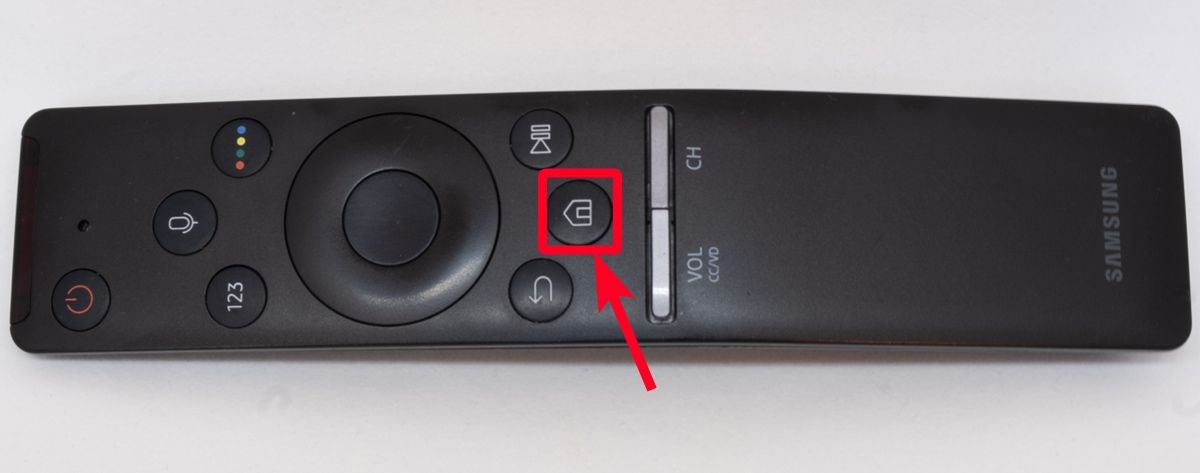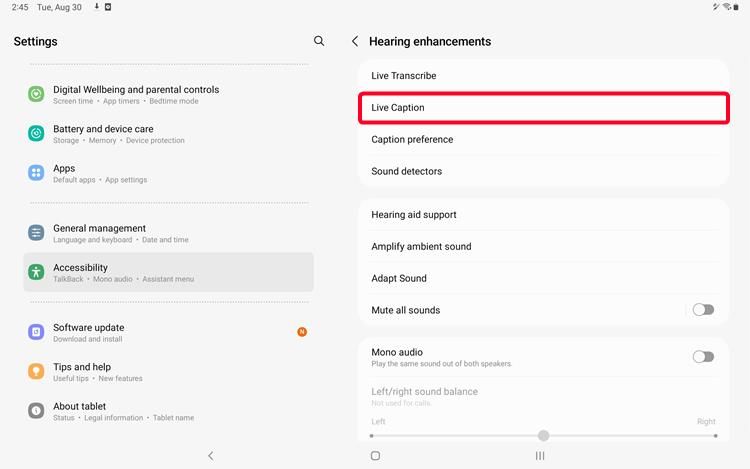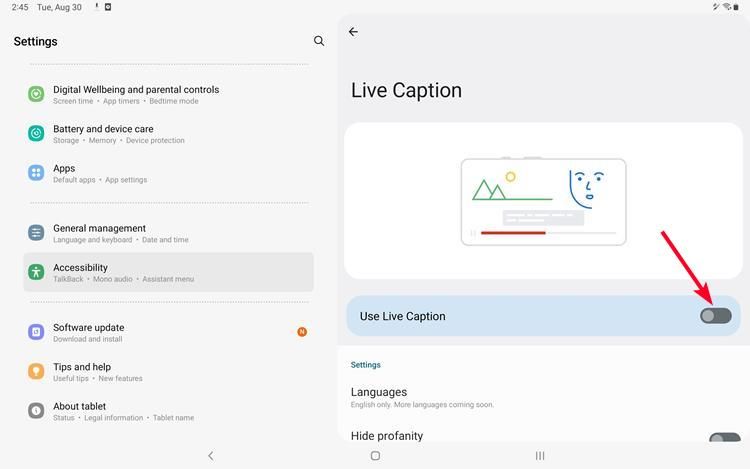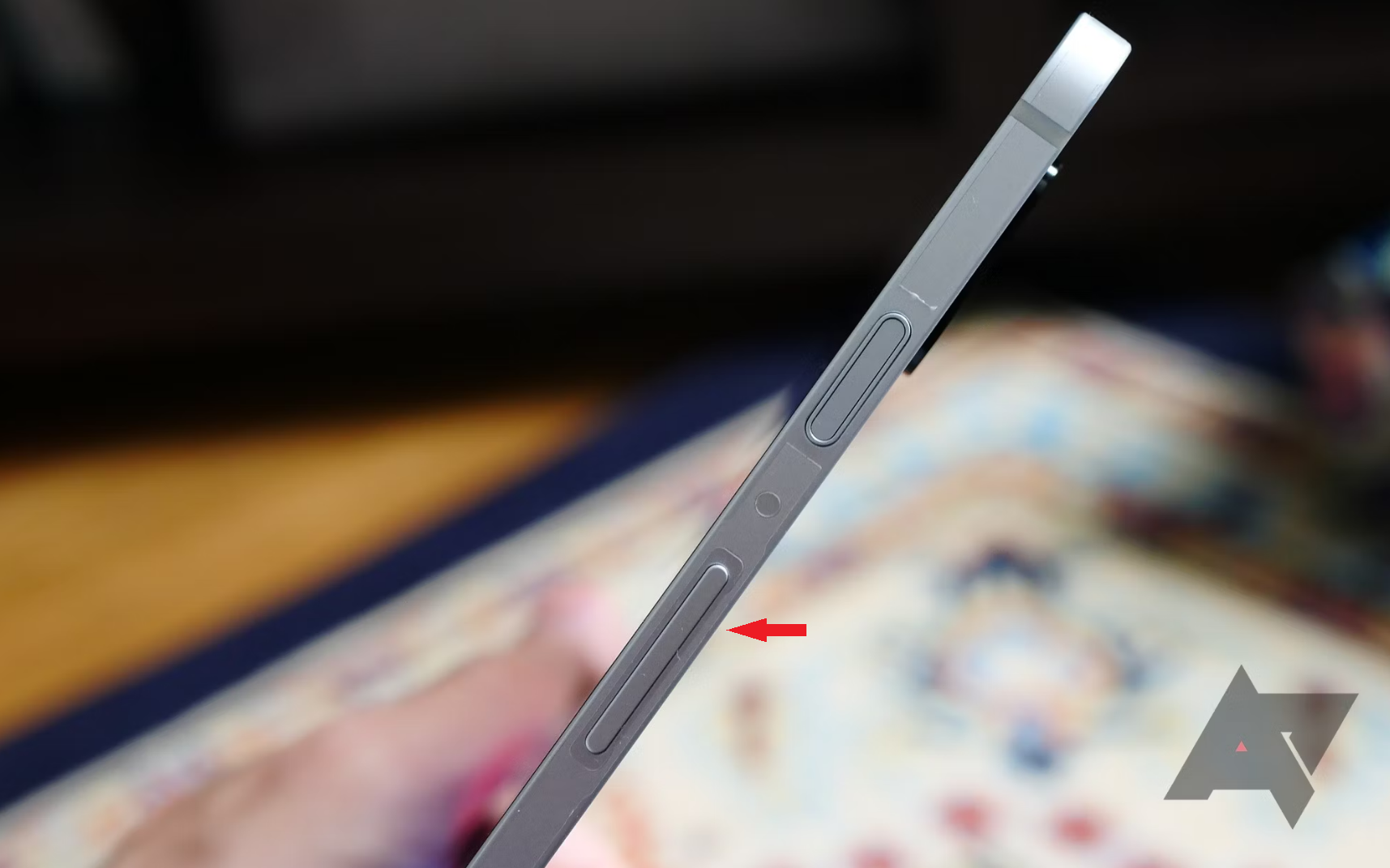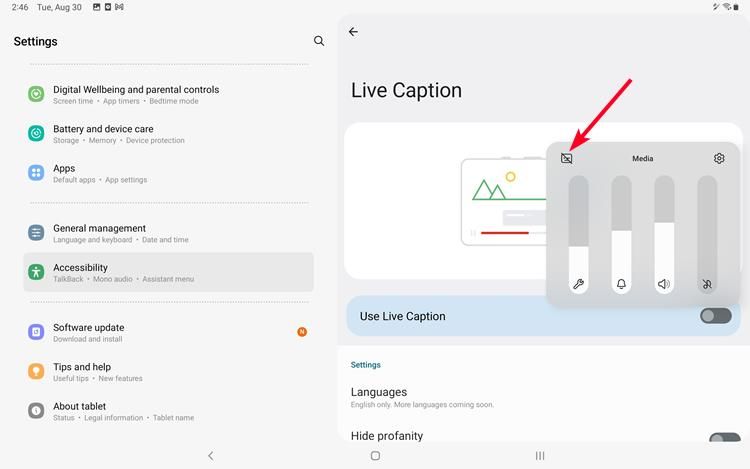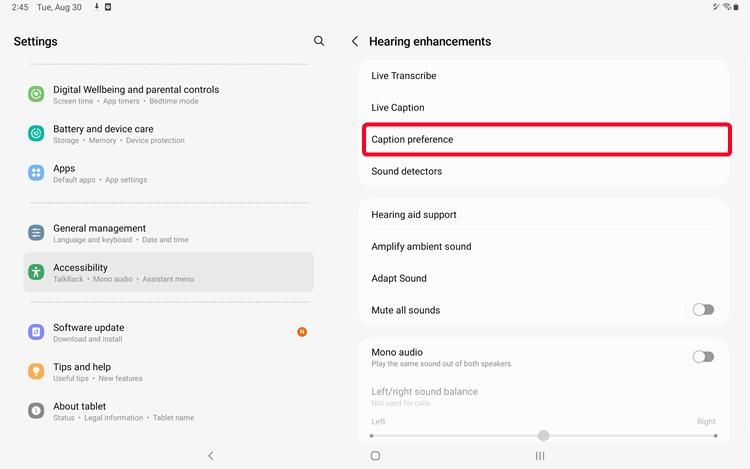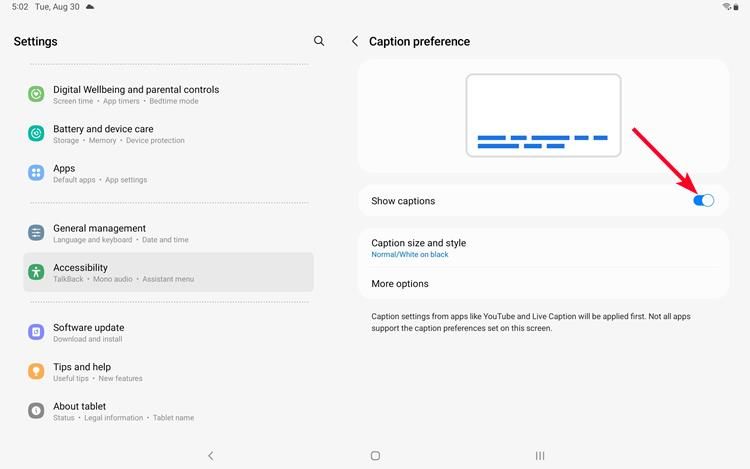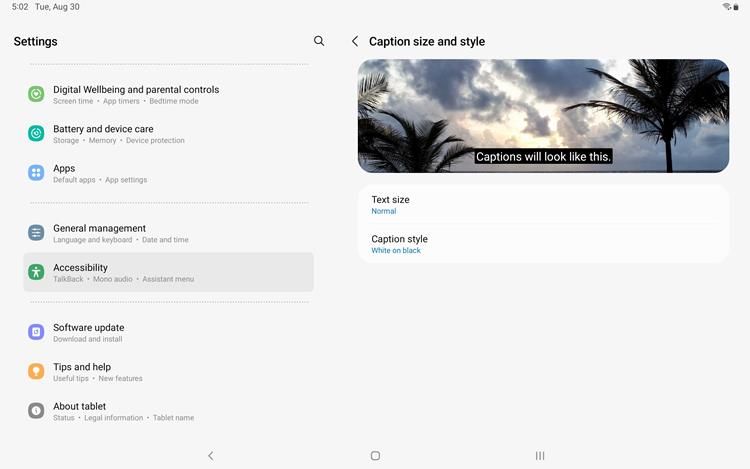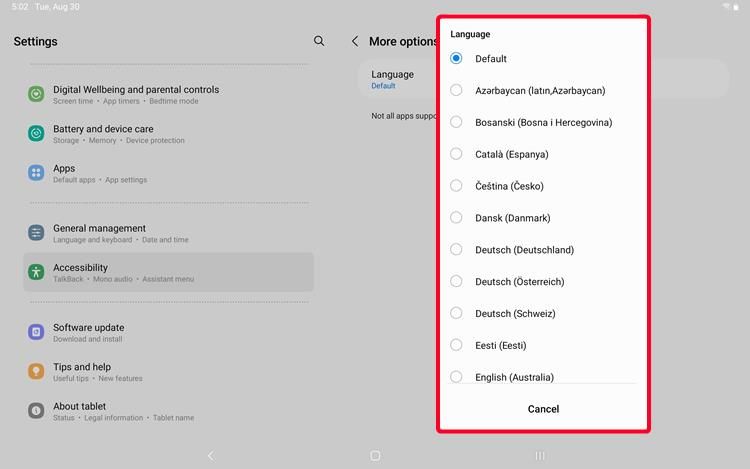Whether you have difficulty hearing sounds or are in a loud place, closed captions help you listen through text. These texts describe background and non-verbal cues to give you the whole experience of watching videos, whereas subtitles only let you know that someone is saying something and in what language.
Many of the best streaming video platforms support closed captioning, and you'll find similar accessibility features on the top Samsung Galaxy phones, tablets, and TVs. If you want to turn on closed captioning and Android's similar Live Caption feature on your device, you'll find the steps to take in this article.
What is closed captioning?
Closed captioning is an assistive technology that transcribes speech from videos and audio messages into text in real time on your television, phone, or other visual display. The feature helps people who are deaf or hard of hearing read and understand what they're watching. It works much like subtitles, but there's one difference.
While both appear on your screen, closed captions (CCs) are intended for people with disabilities. They could go as far as describing background noises and audio cues, like the wind blowing or fingers tapping a keyboard. Meanwhile, subtitles are for people who can hear but don't understand the language in the content or are in a noisy environment.
The closed part of the concept means you can turn the feature on or off as you wish. Just as there are closed captions, open captions also exist. With the open type of captioning, texts are always in view on your screen. You can't turn them off because they are embedded into the video.
Below are the different types of closed captioning:
- Pop-up closed captions: These are the captions you see on prerecorded web content. The captions appear in blocks of two sentences at once and then disappear to make room for the next block of captions.
- Roll-up captions: These appear in blocks of two to three sentences that scroll onto the screen from the left to the right side and then disappear to make room for the next block of captions.
- Paint-on closed captions: These are similar to roll-up captions. Rather than scrolling onto the screen, paint-on captions appear one word at a time or letter-by-letter before disappearing.
The difference between closed captioning and Live Caption
Closed captioning dates back to the early 1900s, when video content needed interpreters because they had no sound. As sound came to television, millions of people with hearing impairments lost access to movies as interpreters were no longer needed. In 1947, Emerson Romero initiated the first captioning of a film through a manual process of cutting videos into parts and slipping texts between them. Many human transcribers copied this process until closed captioning became mainstream in 1951.
In recent years, tech giant companies started using Automatic Speech Recognition (ASR) technology to generate closed captioning. Additionally, closed captioning is widely available to mobile devices and computers, not only televisions. Google's Live Caption feature is an example.
At Google I/O in 2019, Google introduced a feature that allows you to read real-time captions while watching videos or listening to audio messages. Unlike traditional closed captioning, humans don't need to write the captions or hard-code them into a video. Live Caption uses artificial intelligence that listens for sound on your device and automatically serves up the text transcription. Like most AI, it functions independently and doesn't require an internet connection.
Another significant difference between closed captioning and Live Caption is accuracy. Automatically generated captions have more errors because an AI makes them, not a human being.
How to turn closed captioning on and off on Samsung TV
To toggle closed captioning on or off, access your TV's settings menu with the remote control. Pressing the Home button will take you there, but the steps may vary on different Samsung TV models. For instance, some models have Subtitle Settings in the Accessibility menu instead of Caption Settings.
Activating closed captioning on Samsung TV
-
Press the Home button on your Smart Remote to open your TV menu.
Source: Wikimedia Commons
- Go to Settings > All settings.
- Navigate to the General & Privacy menu and select Accessibility.
- Open the Caption settings menu. You may see Subtitle Settings.
- In the Caption Settings menu, press the center button on your Smart Remote to turn on Caption.
Turning off closed captioning on Samsung TV
- On your Smart Remote, press and hold any volume button for two seconds to open the Accessibility shortcuts menu. Other remotes may have a dedicated button for the caption feature.
- Select Caption to turn off the feature.
How to change closed caption positions, language, and more on your Samsung TV
Switch their positions if the closed captions overlap essential elements or text on your screen. You can also change the text colors and sizes to contrast well with background images, allowing you to see them clearly.
- Press the Home button on your Smart Remote.
- Go to Settings > All settings > General & Privacy > Accessibility.
- Navigate to Caption settings > Digital Caption Options.
- Select Position from the list of caption settings.
- Move the captions to the top, bottom, original top ratio, or original bottom ratio of your TV screen.
Change the closed caption size, contrast, and font color on Samsung TV
- Navigate to Settings > All settings > General & Privacy > Accessibility.
- Go to Caption Settings > Digital Caption Options. You'll see options to adjust the caption size, foreground and background colors, and foreground and background opacity.
- To restore the changes you made to the original state, select Return to Default.
Change the closed caption language on Samsung TV
- Navigate to Settings > All settings > General & Privacy > Accessibility.
- Go to Caption settings > Caption Mode.
- Switch from the default language to your preferred one.
Available languages vary by broadcasting stations, so using the Default language is often better.
Turning Live Caption on or off on Samsung phones and tablets
A quick trip to the Accessibility section in your Settings menu should help you activate Live Caption on your Samsung Galaxy devices. A new icon appears when you press the volume buttons on the side of your phone, allowing you to turn Live Caption on or off without returning to the settings menu every time.
Additionally, Live Caption works on the Google Pixel 7 series and some Android phones running Android 10 or higher. You may not have access to the feature on older devices. Some phones may also be unable to access it in other languages except English.
This guide uses a Samsung Galaxy A23 running on One UI 5 based on Android 13. The steps may look different on your version of Android.
How to turn on Live Caption on Samsung smartphones
- Go to Settings.
-
Select Accessibility.
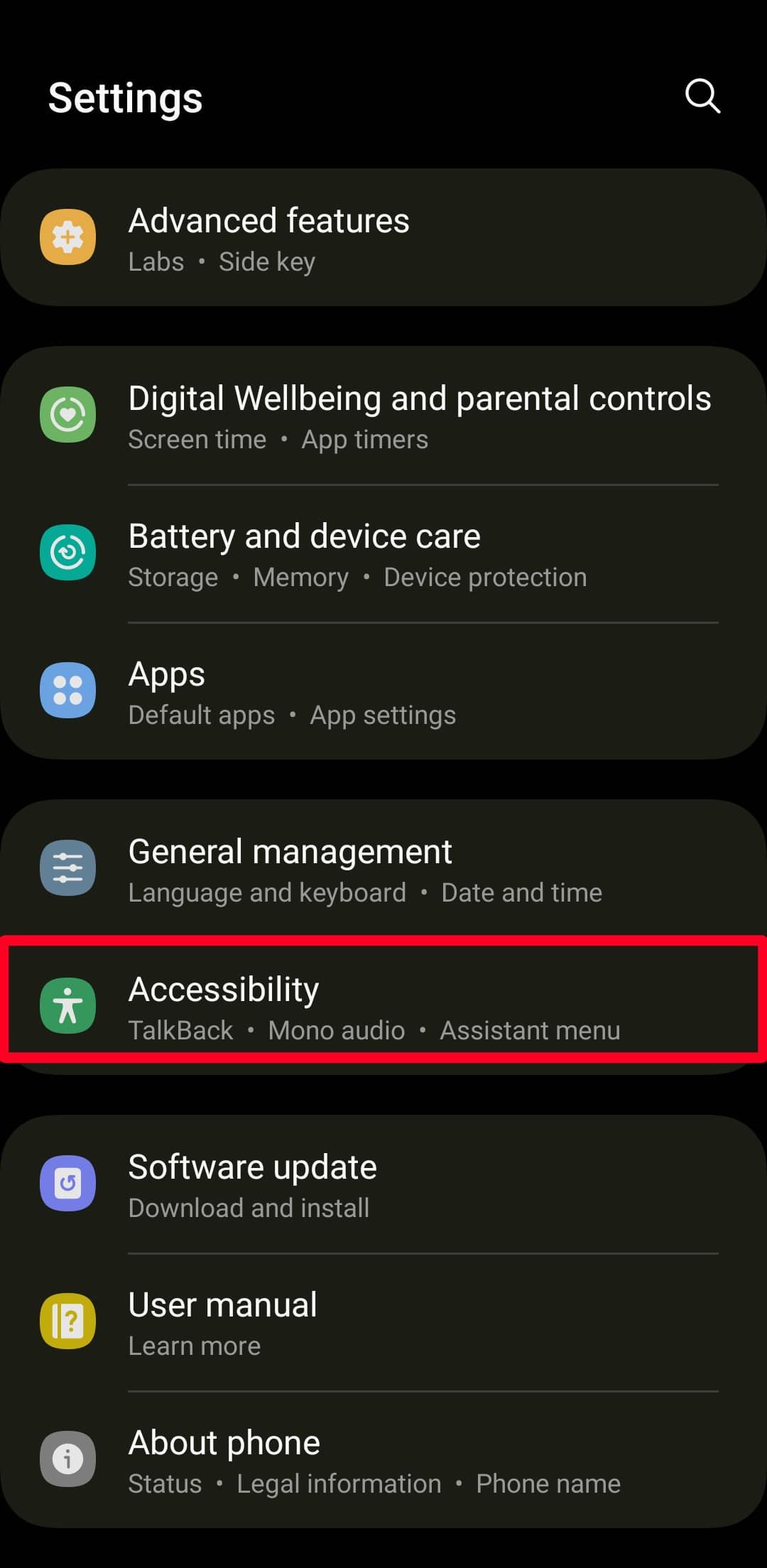
-
Navigate to Hearing Enhancements > Live Caption.
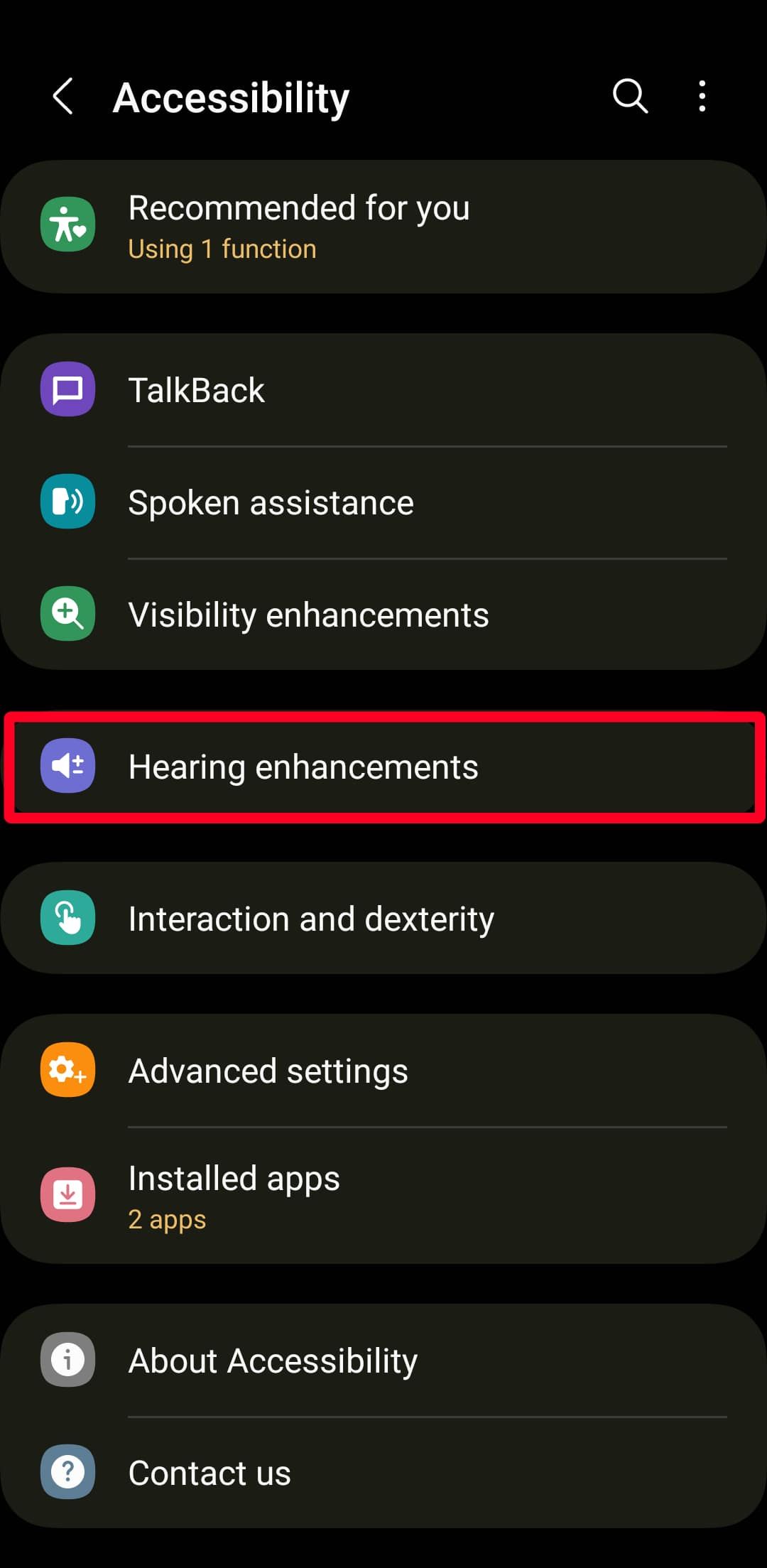
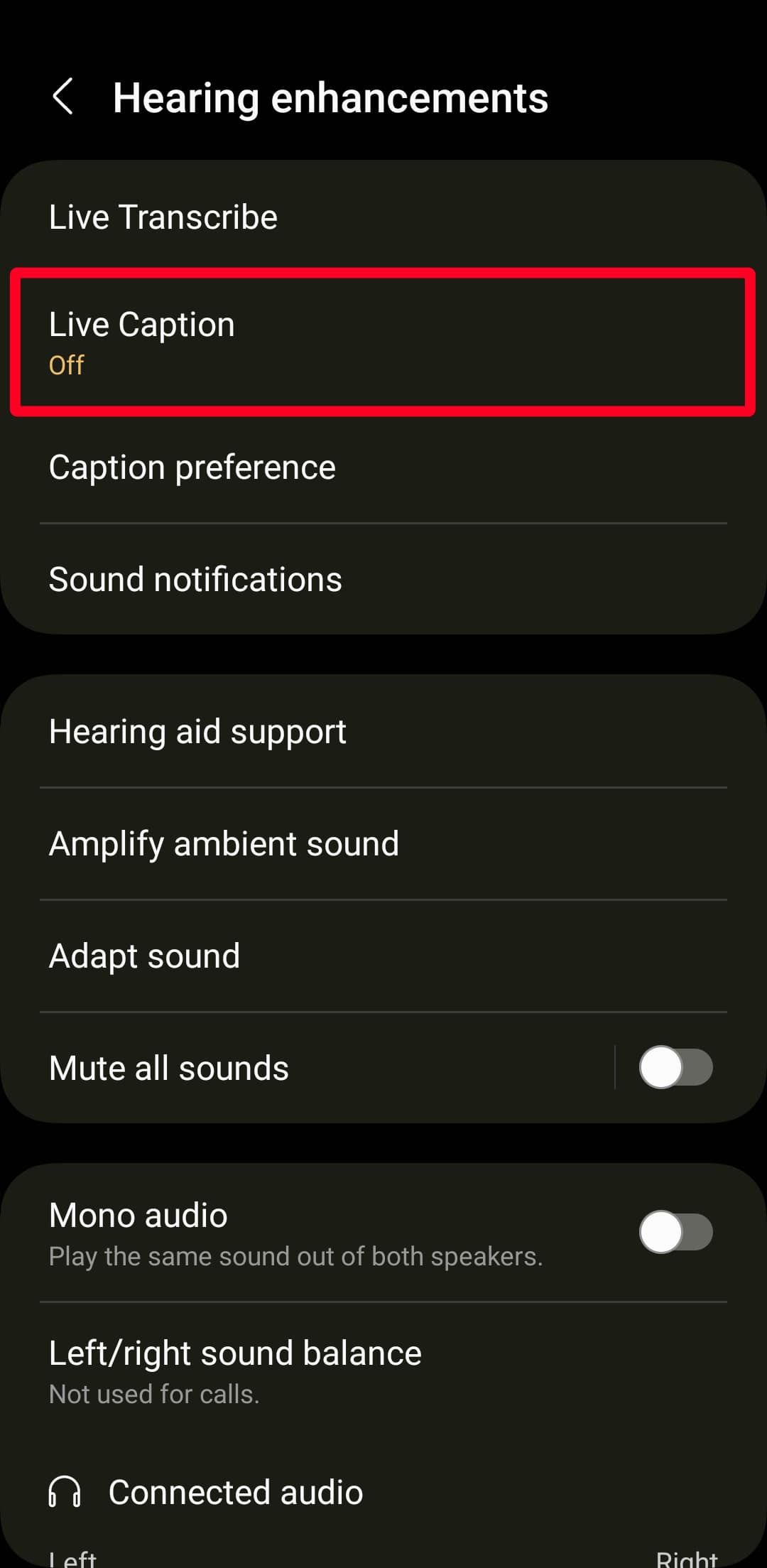
-
Tap the toggle switch beside Use Live Caption to activate the feature.
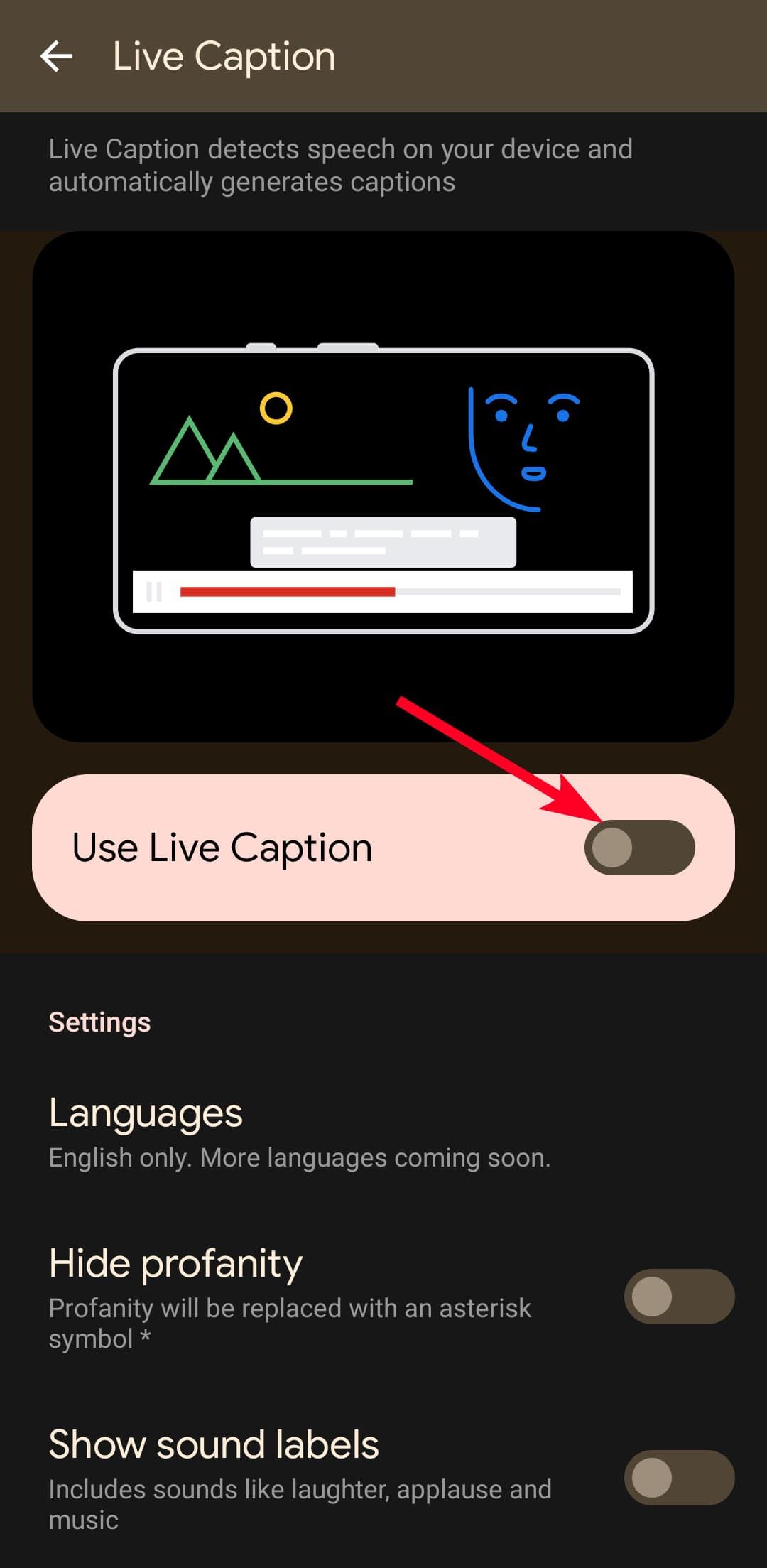
How to turn on Live Caption on Samsung tablets
- Open the settings menu.
-
Navigate to Accessibility > Hearing enhancements > Live Caption.
-
Tap the toggle switch beside Use Live Caption to turn on the feature.
Live Caption automatically detects audio streams from your phone once it's on. A text box appears on your screen when the feature detects speech. You can drag the box around to prevent blocking other elements on your screen. Drag the box to the bottom of your screen to dismiss it entirely.
How to turn off Live Caption on Samsung smartphones
- Press either volume button on the side of your phone to display the volume slider.
- Tap the three-dots icon to expand the slider.
-
Tap the Live Caption icon to turn off the feature.
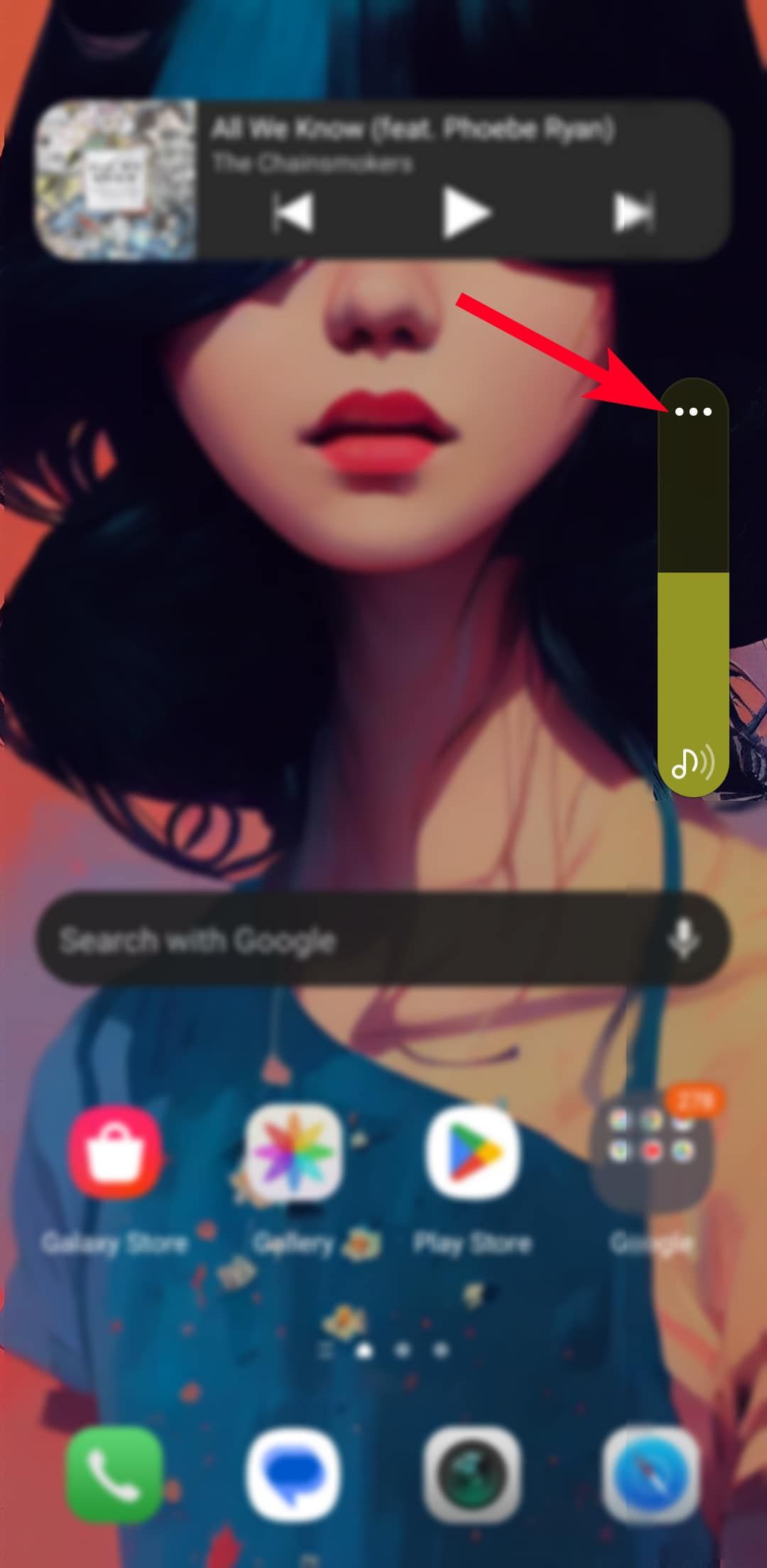
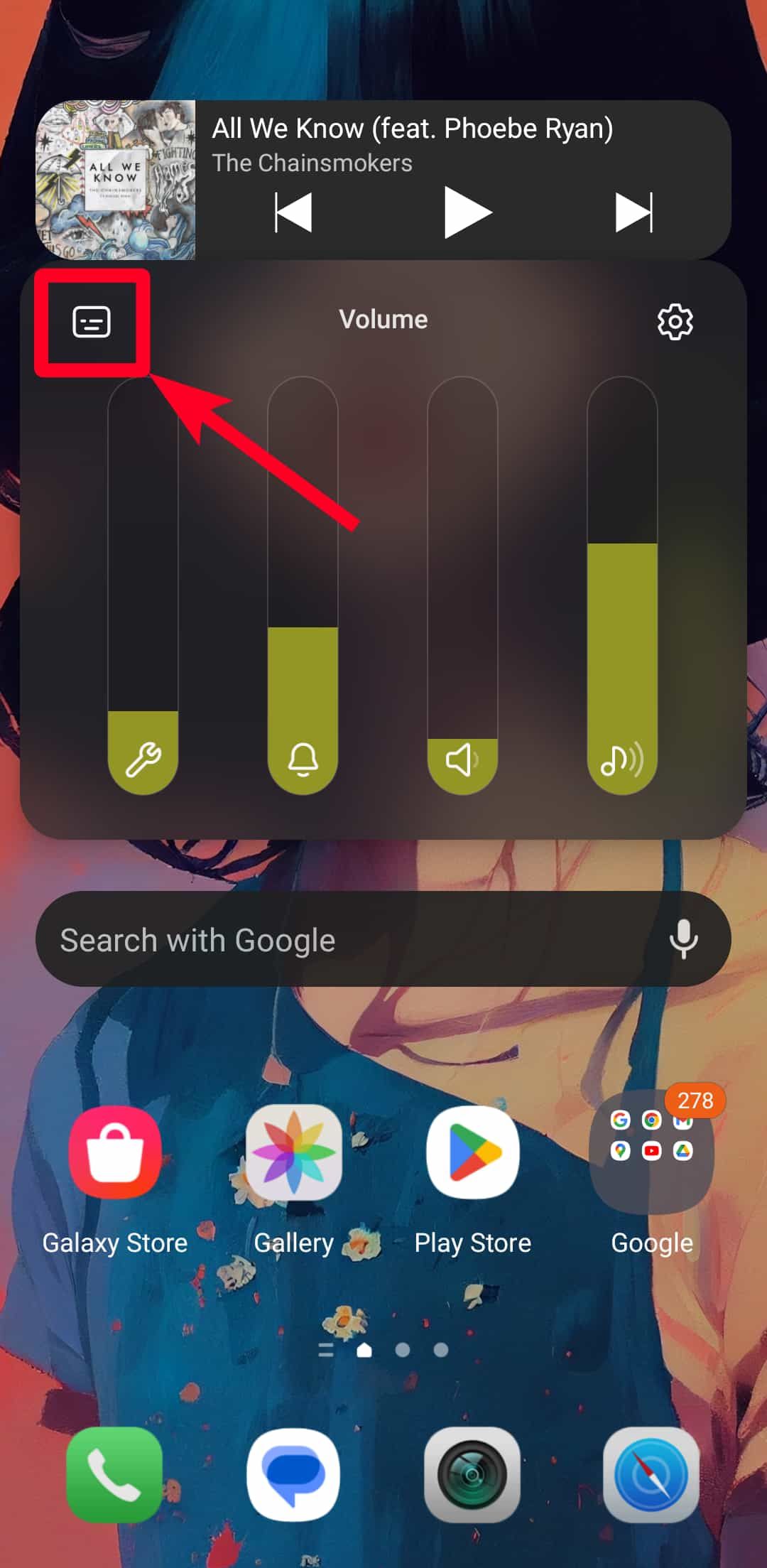
How to turn off Live Caption on Samsung tablets
-
Press either volume button on the side of your tablet to display the Volume slider.
-
Tap the Live Caption icon, and the feature turns off.
Live Caption uses AI to listen to speech and generate captions. Your device isn't human, so spelling mistakes and misinterpretations will happen. The feature works best with slow media files where the speakers are audible and not talking over each other.
Change Live Caption styles and more on Samsung phones and tablets
The Caption preference menu lets you tweak your caption's appearance and language. However, since Live Caption only works for select devices, you might experience limited functionality. For one, the captions may not work on media apps that don't support closed captioning. Additionally, you may be unable to change captions to your preferred language.
How to change Live Caption preferences on Samsung smartphones
- Go to Settings > Accessibility > Hearing Enhancements.
- Select Caption Preference.
-
To apply any settings you change in this menu, tap the toggle switch next to Show caption.
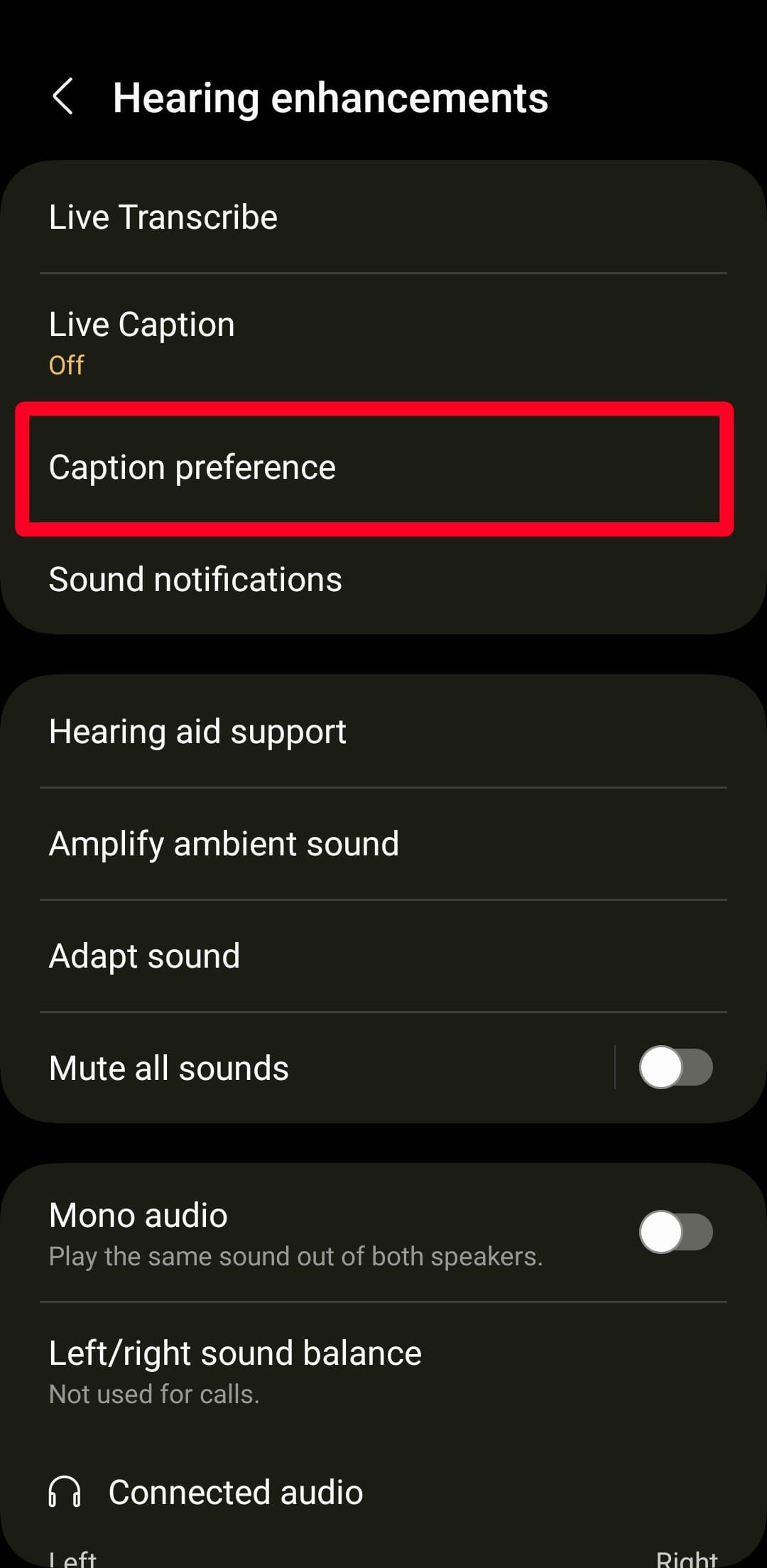
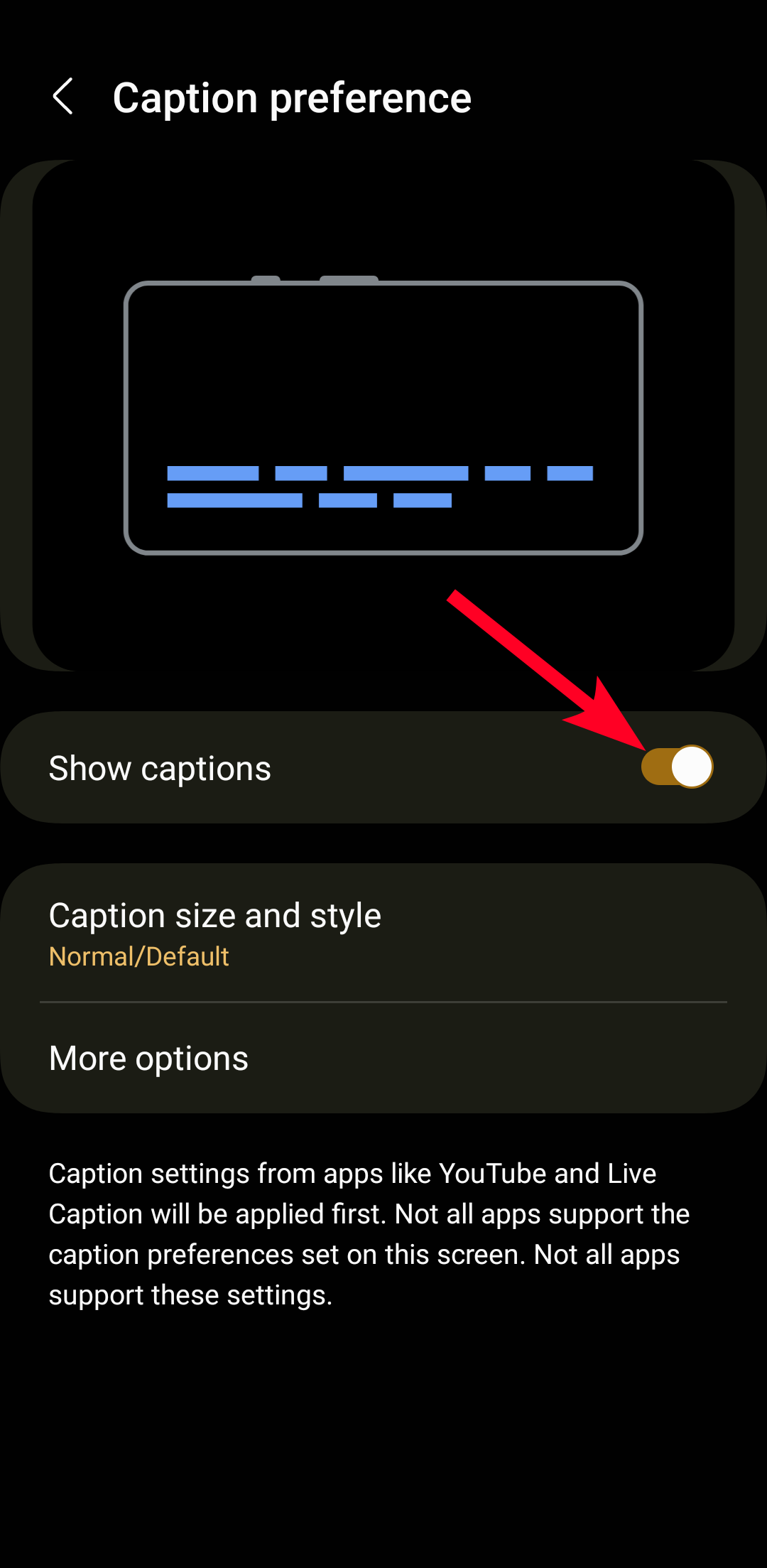
- To modify the appearance of your captions, tap Caption size and style. This setting allows you to change the appearance of your captions with preset styles or custom ones.
- To change the language of the captions, tap More options. Although you can change the default language from English, all apps may not support the language settings.
How to change Live Caption preferences on Samsung tablets
-
Open the Settings menu and navigate to Accessibility > Caption Preference.
-
Tap the toggle switch next to Show captions to apply any style selections you make for your captions.
-
Once you allow your device to show the caption settings, tap Caption size and style.
-
Change the caption fonts and sizes.
- To change the language of your captions, tap More options. Not all apps support language settings.
Use closed captioning for movie night and more
Closed captioning is an impressive lifesaver and has evolved over the years. More companies are developing software to generate fast, real-time transcriptions without relying on a decoder or human transcriber. Google's Live Caption is closer to achieving that goal, but it's imperfect. The feature is still a hit-and-miss when transcribing audio, especially into multiple languages. It's also not designed for transcribing real-life conversations with other people. If a written transcription is vital to you, learn how to use Google Live Transcribe.


